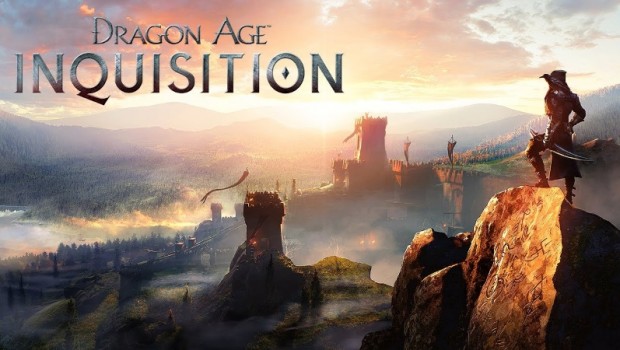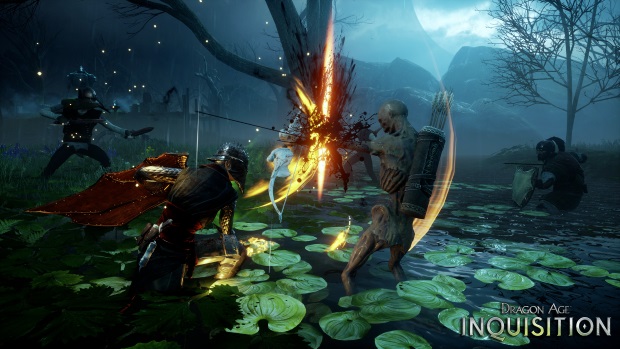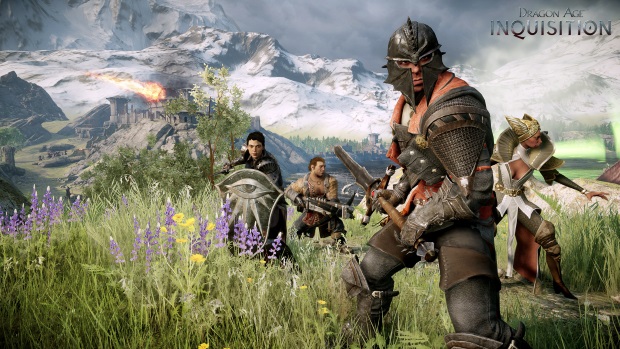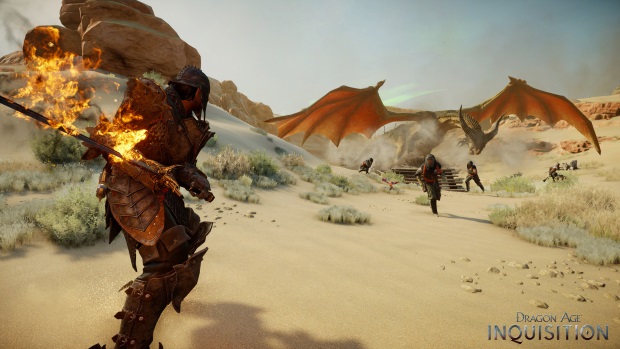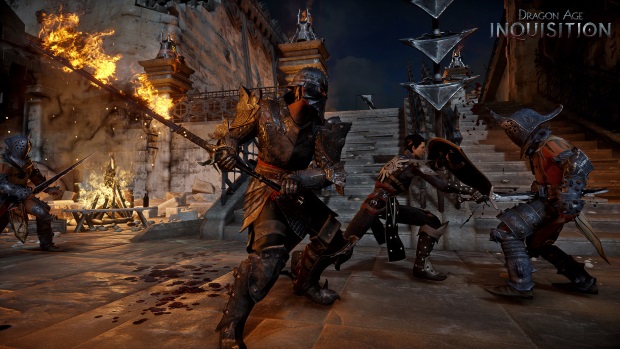Dragon Age Inquisition PC Review
Summary: Expect this Inquisition... to be awesome
4.8
Incredible
Dragon Age Inquisition
Developer: Bioware
Publisher: EA
Genre: RPG
Platform(s): PlayStation 4, Xbox One, PlayStation 3, Xbox 360, PC (reviewed)
Rating: MA15+
Reviewer: Dakoda Barker
I spent two hours tweaking the tapestry in Dragon Age Keep before embarking on Dragon Age Inquisition. Revisiting my decisions and re-crafting my personal Dragon Age universe was an immensely enjoyable process; I switched between the Keep window and the Dragon Age wiki, refreshing my memory of those adventures long past. Inquisition is captivating even before the game begins. It wasn’t until I encountered my first statute of Paragon Branka that I realised something was amiss. I had killed Branka in Origins; there was no way that the Dwarven Assembly would deify such a person. But I was too many hours in to turn back. I had already become the Herald of Andraste, saviour of Thedas—it just wasn’t my Thedas.
Dragon Age Inquisition is packed full of lore; most of the lore is references to the events of the previous instalments, but plenty of insight into other events—both dramatic and personal—is given, which helped me come to love this weird, alternate dimension. Even though I was an outsider in a foreign land (playing a gay female dark elf also contributed to this ‘otherness’), the lovingly crafted world was still one that I felt deserved saving.
Dragon Age Inquisition is an exercise in scope. The world is immense. Its history is detailed. The threats are severe—and only continue to escalate as the game progresses. Inquisition seems a direct response to those who criticised Dragon Age II for its recycled locations and smaller, more personal narrative. Inquisition firmly positions players as the ultimate force of change in Thedas and then unleashes a flurry of challenges and obstacles.
With the world under constant threat, the Inquisitor always has somewhere to be. There are allies to recruit, vital resources to find, situations to resolve. This constant tension clashes terribly with the desire to explore. Locations are expansive and full of things to collect and quests to do. I spent several hours in the first location, The Hinterlands, collecting elfroot herbs and iron ore, setting up Inquisition camps, fighting enemies, and staking claims on landmarks before I realised that, if the situation was as dire as I had been told, then my Inquisitor was frolicking in the wilderness while demons poured through a hole in the sky and murdered people.
Inquisition hands players total control over pacing the narrative and then offers an extraordinary amount of distractions, mitigating the sense of time-pressure. Because players are almost guaranteed to try to collect everything before moving on (I spent 7 hours in The Hinterlands before travelling to the second region), the severity of the threat seems incredibly overstated: demons must not be that big an issue if I can wander around the forest for a few days doing nothing.
But it’s hard to complain properly about exploration being too engrossing. The addition of a jump button lends verticality to movement and contributes to a much more ‘open’ world. This, coupled with the absolutely gorgeous locations (I want to hang screenshots of several Inquisition vistas on my walls), makes Thedas a joy to experience—so long as you put the impending deaths of innocents due to gallivanting out of mind. With that said, Dragon Age Inquisition is optimised for AMD hardware that with the Frostbite engine looks magnificent on a PC using this architecture that also scales quite well, ensuring that it can be played on a variety of systems.
Combat is fed by the jumping mechanic as well. Terrain and positioning both play important roles, especially true for archers. My Inquisitor is a master of the bow and often stands atop little rocks or overhanging cliffs to gain a damage bonus; these also serve as really great cover to avoid return fire from enemy archers and mages. Generally, combat is thoroughly satisfying and carries an appropriate level of challenge. Too much exploration can result in over-levelling, which does make encounters too easy, but destroying enemies with a few powerful blows also carries its own kind of satisfaction.
Although the tactical view—which slows time and uses a top-down perspective—seems tailor-made for PC, I found it to be largely unnecessary. The default perspective limits the field of view quite significantly, especially in caves, and inputting actions and then watching them execute was a laborious process that turned minor scrapes into complex, tactical nightmares. Tactical view is useful for pausing time and scoping out a battlefield, or for redirecting party members to a more dangerous target, but each character has behaviours that can be tweaked from the character menu, rendering tactical view redundant for me.
Inquisition’s larger scope also includes the resources at the main character’s disposal. The Inquisitor can use the war room to initiate off-screen events, delegating these tasks to Commander Cullen, Ambassador Josephine, or Spymaster Leliana. While not an overly involved feature, it adds weight to the Inquisition as a concept. The Inquisitor doesn’t save the world singlehandedly—it’s the Inquisition, thanks to its clever preparations, that will restore peace to the war-weary land.
Final Thoughts
Dragon Age Inquisition is massive. Big isn’t always better—and the avalanche of things to collect will shred the narrative pacing of anyone halfway inclined to exploring and collecting—but Inquisition manages to succeed at instilling a sense of scale that feels authentic. This might not have been the Thedas that I crafted over the previous games, but it was still a Thedas I grew to adore. And besides: it’s just one more reason to replay such an enjoyable adventure. Maybe I’ll give the Qunari mage a try.


